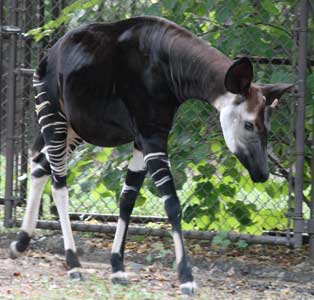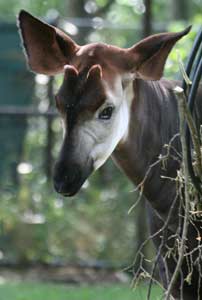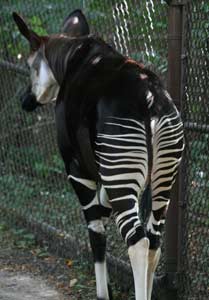Okapis For Sale



Even though they have stripes that resemble a zebra, the okapi is more closely related to the giraffe. In fact, okapi is the only living relative of the giraffe. Like the giraffe, male okapi have hair-covered ossicones atop their heads, but unlike giraffes, the okapi's neck is proportionate to its body. Its fur is a reddish brown color with white stripes on its hindquarters and ringing its legs. Full grown okapi stand a little over four and a half feet tall.
Pet Okapi
Because okapi are native to the Democratic Republic of Congo, they are not cold hardy animals. The ideal enclosure would be one kept at between 66 and 78 degrees Fahrenheit and a heating system for colder months. Outdoor enclosures should provide some shade from the direct sun and walls should be at least 6 feet high. The minimum size of enclosure for two okapi is about 5500-square feet. Okapi are shy animals so an exterior pen that is located in an area with a minimal amount of traffic and noise as these will disturb and disrupt the animal. Indoor enclosures, or stalls, need to be at least 300 square feet per animal.
Okapi Diet
Okapi eat a diet of tree leaves and buds, along with grass, fruit, fungi, and ferns. They are selective eaters and will choose the highest quality leaves and grasses from the food that is provided to them. Most okapi in captivity are fed a diet that mixes food pellets with fresh hay.
Okapi Enrichment
It is important for the mental and physical health of the animal that okapi are not bored. They find enrichment and stimulation by interacting with their keepers and exploring new toys, such as balls, food puzzles, or traffic cones. Fresh cut tree branches with leaves or alfalfa hay can be given as enrichment items.
Breeding Okapi
Mating does not depend on the season for okapi. Okapi in captivity will go into heat every 15 days. Females give birth to a single calf (multiples are rare) after a gestational period of 440 to 450 days. New born calves are kept hidden and nurse infrequently. They are fully weaned by six months.
No Okapis currently listed for placement







Comments